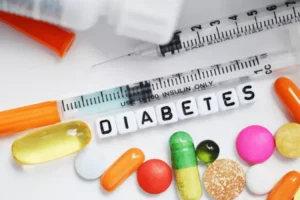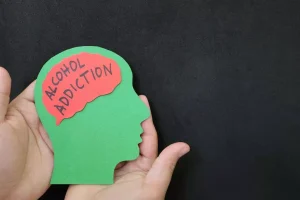
The hippocampus, a region crucial for memory formation, can be particularly affected by chronic stress and trauma. Updates about mental health topics, including NIMH news, upcoming events, mental disorders, funding opportunities, and research. Due to the nature of traumatic events veterans experience such as being threatened, high stress environments, death, severe injuries, violence, and sexual trauma, veterans are often deeply impacted after combat.
How do children and teens react to trauma?

In addition, the models included six day-of-the-week indicators, elapsed time since initiating study, and the time quadratic term at L1. At L2, the models included grand mean centered lability, disinhibition, gender, age, site, and the subject mean of time in study. Time, time quadratic term, PTSS, and drinking slopes were predicted by lability, disinhibition, gender, and age. These tested the hypothesized interaction effects of lability and disinhibition controlling for gender and age. To ensure the time interactions reflected the influence of L2 variables on within-person growth, corresponding interactions with L2 (subject mean) time were also included (Enders & Tofighi, 2007). Conduct problems and dependence syndrome symptoms were count outcomes with a negative binomial reference distribution.

Treating both PTSD and SUD
Soldiers with PTSD who experienced at least one symptom of AUD may be disinhibited in a way that leads them to make risky decisions, including the potential for aggression or violence. However, this relationship was not demonstrated with significance among veterans who had more severe PTSD symptoms. The lifetime prevalence of severe AUD was about 14%, and the past 12-month prevalence was more than 3%. Less than 20% of respondents who experienced AUD in their lifetime ever sought treatment for the condition.
Brownouts, blackouts

To understand how long-term memories form, think of your brain as an Instagram account, except if your camera was constantly filming to collect memories. Our capacity to remember words and facts — semantic memories — persist from childhood. About two decades ago, the concept of memory reconsolidation — a process where the mere act of recalling a memory can edit it — landed in the mainstream and bred a misconception. Reconsolidation only occurs under certain circumstances, but a flurry of studies and media coverage led the general public to believe that our memories can’t be trusted. Traumatic memories represent an exception, as they tend to stick with us as a sort of survival instinct.
Only 15 of the 17 potential symptoms were included in the random assessments because two items refer to sleep behavior. These two symptoms regarding difficulty sleeping and distressing dreams ptsd alcohol blackout about their traumatic event were assessed by two dichotomous items in the self-initiated morning assessment. The PTSD variable was the percentage of items endorsed across all assessments.
- This brochure provides information about post-traumatic stress disorder (PTSD) including what it is, who develops PTSD, symptoms, treatment options, and how to find help for yourself or someone else who may have PTSD.
- Women are also more likely to experience a number of deeply impactful traumatic events such as rape and sexual abuse and often turn to alcohol to cope.
- If multiple people report similar details, intoxicated or not intoxicated, then their testimonies will be given more weight.
- In the preliminary analysis, an exposure variable equal to the number of completed assessments accounts for individual differences in response rates.
PTSD and Alcohol Abuse in Veterans
- There is a step right before blacking out — called brownouts or grayouts — where you’re taking in some of what’s happening.
- This, in turn, can lead to addiction and a comorbid diagnosis of PTSD and alcoholism.
- This all stems from your mind not having the tools to sort through emotions, thoughts and feelings in the moment.
- Thus, the inclusion of lagged residuals allow for the estimation of lagged within-person effects, and the inclusion of estimated person-level intercepts, linear, and quadratic slopes allow for the estimation of between-person effects.
- Friends and police interviews can add to memory contamination, as well as a constant stream of news reports about similar incidents.
Repeatedly dwelling on a traumatic memory can worsen the experience of recalling it. If you black out regularly, it’s probably time to think about whether you have a drinking problem. But it does mean that you’re taking a gamble with your health and safety, and it would be a good idea to cut back on your drinking.
The Perspective of Others: Understanding PTSD Blackouts from the Outside
Take our free, 5-minute alcohol abuse self-assessment below if you think you or someone you love might be struggling with alcohol abuse. The evaluation consists of 11 yes-or-no questions that are intended to be used as an informational tool to assess the severity and probability of an alcohol use disorder. The test is free and confidential, and no personal information is needed to receive the results. AUD and PTSD have shown a consistent comorbidity over many decades and in diverse populations.
- Download, read, and order free NIMH brochures and fact sheets about mental disorders and related topics.
- This included the anxiety and substance use disorder modules, which were used to assess PTSD and AUD for sample description.
- When an individual experiences trauma, the brain’s stress response system becomes hyperactivated, leading to changes in the way memories are processed and stored.
- • Because the brain is still developing during our teenage years and early 20s, heavy drinking in adolescence, in particular, can lead to changes in the brain.
- The bursts were separated by approximately 3 months and research staff contacted participants to schedule the appointments.
- Finally, although the analytic models address temporal relationships, they do not provide a basis for causal inference.
How to Handle and Prevent PTSD Blackouts
It is possible that for our sample, which was a college attending and non-treatment seeking group, difficulties controlling impulses when upset play less of a role in alcohol-related consequences than in individuals seeking treatment. Drinking https://ecosoberhouse.com/ to cope with negative affect may explain elevated alcohol use in individuals experiencing distress (Khantzian, 1997). Those with PTSD may use alcohol to dampen traumatic memories or “escape” from symptoms of PTSD (Brady, Back, & Coffey, 2004).
A team of professionals at The Recovery Village can assist in designing a comprehensive treatment plan to suit someone’s specific disorders. People seeking co-occurring PTSD and alcoholism treatment need to work with treatment professionals experienced in PTSD and alcohol treatment. The Recovery Village is experienced in treating alcohol and other substance use and co-occurring disorders like PTSD.
